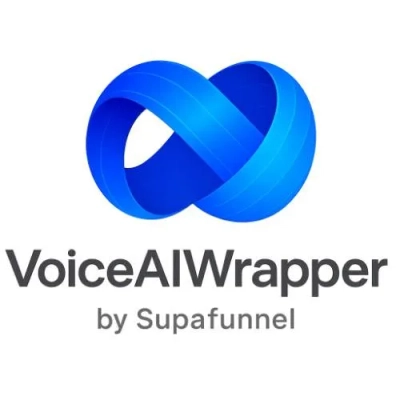9 Times a Virtual Assistant Helped Streamline Processes and Improve Workflows
Virtual assistants are revolutionizing the way businesses operate, offering unprecedented opportunities for streamlining processes and improving workflows. This article explores nine compelling examples of how AI-powered assistants are transforming various aspects of business operations, from sales pipeline management to meeting scheduling. Drawing on insights from industry experts, we'll delve into the practical applications and tangible benefits of integrating virtual assistants into your business strategy.
- VA Transforms Sales Pipeline Management
- Chatbot Enhances Cost Calculator Tool
- Documenting Workflows with Virtual Assistants
- AI Accelerates Client Onboarding Process
- Automating Investor Outreach Boosts Efficiency
- VA Revolutionizes Meeting Management System
- VA Streamlines Content Calendar Organization
- NLP Assistant Optimizes QA Operations
- VA Simplifies Meeting Scheduling Process
VA Transforms Sales Pipeline Management
One of the smartest moves I made during our early scaling phase was bringing in a virtual assistant—not as an afterthought, but as a strategic asset. The impact was immediate when we assigned our VA to overhaul and manage our sales pipeline follow-up process, which had quietly become a black hole for lost leads.
Before the VA stepped in, our follow-ups were inconsistent. Some leads were getting multiple emails, others none at all. The sales team was stretched thin, juggling outreach with demos and onboarding. It wasn't a matter of capability—it was bandwidth. That's where our VA came in.
We started by mapping out every stage of the lead journey—from first inquiry to decision point. Then, we worked with the VA to build a structured follow-up system using templates, CRM automations, and reminders. She took ownership of making sure no lead went dark, organizing outreach cadences, sending check-in messages, and even prepping custom data sheets for our sales calls.
The results were hard to ignore. Our lead response time dropped dramatically. Conversion rates from cold leads to qualified calls improved by over 30%. And the sales team was freed up to focus on high-value conversations instead of chasing loose ends. What really struck me was how quickly the VA became a force multiplier—not just doing tasks, but identifying gaps we hadn't noticed.
The key step that made this work? Treating the VA like a true team member, not a task-taker. We gave context, clear expectations, and feedback loops. That allowed her to go beyond execution and into optimization.
If you're a founder or operator trying to do it all, my advice is this: find one repetitive, process-heavy area that's leaking time or energy—and give it to a capable virtual assistant. Then watch what happens when they make that process not just manageable, but scalable. For us, it wasn't just a timesaver. It became a growth lever.
Chatbot Enhances Cost Calculator Tool
One powerful example of how a virtual assistant has streamlined my work is in the development and continuous improvement of my Microsoft Fabric MVP Cost Calculator (https://fabric.m365calc.com/), a free web-based tool I created to help organizations estimate their Microsoft Fabric licensing costs. The goal behind this tool is not only to provide value to the community but also to drive traffic and engagement to my LinkedIn company page (https://www.linkedin.com/school/m365-show/).
To optimize both the tool and the user experience, I integrated a conversational chatbot directly into the application. This assistant serves multiple purposes:
1. Collecting Real-Time Feedback
Users can share their thoughts, issues, and feature requests directly through the chatbot. This real-time feedback loop is far more effective than traditional forms or email support—it lowers the barrier to engagement and captures context-specific insights while users are actively using the tool.
2. Streamlining Iterative Development
I use the collected feedback to shape the roadmap for the next release. This allows me to prioritize updates based on actual user needs, not assumptions. It also creates a sense of co-creation with my audience, which helps build loyalty and repeat usage.
3. Creating a Living FAQ Base
The virtual assistant doesn't just collect questions—it learns from them. Over time, it has evolved into a living FAQ hub that provides instant answers to the most common queries, such as how costs are calculated, what assumptions the tool uses, and how to interpret results. This reduces my manual support workload and improves the user experience.
4. Driving Engagement and SEO
Since the assistant captures user input and intent, I can align content updates and FAQs with actual search terms and pain points. This has had a measurable impact on traffic and engagement on my LinkedIn company page and related platforms.
Impact:
This small but smart integration has turned a static tool into a dynamic, user-driven platform. I've reduced support time, improved product relevance, increased repeat traffic, and built a stronger community around my tools and content.
Virtual assistants, when implemented thoughtfully, don't just automate—they elevate both user experience and product quality.

Documenting Workflows with Virtual Assistants
One example where a virtual assistant helped streamline a process was during my recent project with an SEO agency. As an Online Business Manager (OBM), I collaborated closely with their VA team to document and solidify their recurring workflows. While the VAs already knew how to perform the tasks, the agency wanted to own the process to ensure long-term consistency and protection.
Here's how we did it:
1. Interview: I began by interviewing the VA responsible for the task to understand their step-by-step flow.
2. Shadowing & Execution: I then shadowed the VA, observed their process in real-time, and performed the task myself to fully internalize it.
3. SOP Creation: Once I understood the workflow, I created a detailed SOP (Standard Operating Procedure).
4. Validation: I reviewed the SOP with the original VA to ensure accuracy and clarity.
5. Testing: To validate the SOP, I asked a second VA—someone unfamiliar with the task—to follow the document from scratch.
The result? The agency now has a reliable, transferable SOP that anyone can follow, making their operations more scalable and secure. It also reduced the risk of knowledge loss if any VA transitions out of the team.

AI Accelerates Client Onboarding Process
Absolutely, I'd be glad to share an example of how virtual assistants can play a crucial role in streamlining processes, as we at VoiceAIWrapper have experienced firsthand. As a co-founder, I recognize that efficiency is vital to scaling our operations and maintaining a high level of service for our clients.
One notable instance involved automating our client onboarding process, which is typically one of the most resource-intensive tasks for any tech service provider. Initially, we faced challenges with manual data entry and extensive communication to set up each client's unique requirements. It was taking us an average of over 30 days to get clients fully operational. This not only delayed our ability to generate revenue but also led to a subpar client experience.
To tackle this, we implemented an automated virtual assistant integrated into our VoiceAIWrapper platform. This assistant handles initial client requests, collects essential information through an interactive workflow, and even schedules meetings with our onboarding team. For instance, when a new client signs up, the virtual assistant automatically sends them an onboarding questionnaire. Once filled out, it integrates with our CRM, allowing us to tailor the setup process to each client's needs.
The impact was profound. We reduced the onboarding time from over 30 days to just about 30 minutes. This not only enhanced our operational efficiency but also empowered our clients to start their voice AI campaigns faster. An added benefit was that our team could focus on more complex tasks—like optimizing campaigns and improving customer engagement—rather than getting bogged down by administrative burdens.
In the end, the integration of virtual assistants into our service model wasn't just about speed; it fundamentally transformed how we interact with clients, leading to sustained improvements in customer satisfaction and retention. It's a testament to how embracing AI-driven tools can elevate both operational efficiency and client experience.
At VoiceAIWrapper, we thrive on innovation, and this example illustrates our commitment to providing streamlined, effective solutions for our partners in the voice AI landscape.

Automating Investor Outreach Boosts Efficiency
Absolutely. One of the most practical uses I found for a virtual assistant was in automating the initial investor outreach process at Spectup. Before we systematized it, I used to manually vet potential investors from databases, tailor emails, and follow up—it was tedious and not scalable. We set up a virtual assistant to scrape updated data from sources like Crunchbase and LinkedIn, match investor profiles to client verticals, and auto-draft highly personalized intro messages based on predefined variables.
The assistant even tracked open rates and scheduled follow-ups, freeing up my time to focus on high-conversion conversations. I remember thinking, "Finally, I can stop living in my inbox." The impact? Our investor matching speed doubled, and client feedback improved significantly because the outreach felt targeted. It wasn't about replacing human touch—it was about reserving that touch for the moments that mattered most. That's the kind of blend between tech and consulting I always push for at Spectup—practical, not over-engineered.

VA Revolutionizes Meeting Management System
As a General Manager, one of my biggest challenges was not strategy, but keeping the moving parts coordinated without drowning in the administration of day-to-day tasks. One painstaking task that consumed too much of my time was managing internal meeting prep, agenda building, collecting the team's updates, and trying not to let decisions be lost in follow-ups.
I hired a virtual assistant to manage this. I thought they would just take notes. What I got was a complete overhaul of how we ran weekly operations for the better.
We started by mapping out the flow of what normally took place in our leadership meetings. Then my VA created a rolling agenda system in Notion, in which team leads could put their updates in before the meeting. If anything was missing, she would ping the team leads, summarize the pertinent information, and deliver a clean and prioritized agenda to me by the end of day Friday.
After every meeting, she didn't just document what was said; she tagged the action items to the right people, made follow-up calls for updates midweek, and politely reminded me if a decision was stalled. That quiet layer of accountability changed everything.
What took me multiple hours every week - chasing updates, organizing notes, tracking - was now a reliable process. More importantly, the meetings got sharper. People came prepared, follow-ups did not get lost, and I was much freer to do other tasks.
The true value was not just how much time I saved. It was the mental space I also recovered. I had assigned a capable VA to take on that process, and I now had less overhead in keeping the engine running and more time for steering the direction of the business. That's when I knew it was no longer just support, it was leverage.

VA Streamlines Content Calendar Organization
One of the best experiences I had was working with a virtual assistant to clean up and organize my content calendar. Before they started, my publishing schedule was scattered across spreadsheets, email threads, and sticky notes - making it easy to miss a deadline or duplicate an idea. I gave my VA access to all my content files, briefs, and publishing platforms, then walked them through my posting schedule and themes.
They consolidated everything into a single project management tool (we used Trello) with color-coded boards for each content type, deadlines on each card, and automated reminders on my calendar. They also added checklists for each stage - draft, edit, design, approval, publish - so I could see at a glance where each piece was at.
The results were significant: I saved at least 3 hours a week on planning and follow-up, my posts went out on time for months without a hitch, and I had more headspace for creative work. Plus, the visual workflow made it easy to see gaps in my content mix, so our strategy became more intentional and balanced.

NLP Assistant Optimizes QA Operations
One of the most impactful examples of using a virtual assistant at ChromeQA Lab came during a large-scale enterprise testing project for a legacy system modernization in the HR domain. We were working with a client whose internal processes were still heavily dependent on outdated manual test scripts and fragmented documentation. Managing test cases, defect tracking, and reporting across multiple environments was consuming valuable time from our senior QA analysts.
To streamline this process, we integrated a virtual assistant powered by a custom-built NLP layer on top of our Jira and TestRail environments. The assistant was trained to handle repetitive queries like fetching test case statuses, logging defects, and even suggesting duplicate bug reports based on historical data. For example, instead of an analyst spending five minutes locating regression test results, the assistant could pull them within seconds, formatted and ready for a client report.
The impact was significant. We saved an average of 14-16 hours per sprint in QA operations. But more than just time saved, it freed up our team to focus on higher-order thinking like exploratory testing and risk analysis. This wasn't just a technical win; it shifted our entire engagement model with the client. We were no longer seen as just testers but as strategic partners in quality.

VA Simplifies Meeting Scheduling Process
One way a virtual assistant made my work easier was by handling the scheduling of client meetings and team check-ins. Before I used the assistant, setting up meetings took a lot of time and often caused conflicts or missed follow-ups. I trained the assistant to use our scheduling software, check everyone's availability on different calendars, and send out invites with all the details. The assistant also reminded people about upcoming meetings and rescheduled them if needed. This process cut down on the back-and-forth emails and fewer mistakes occurred. As a result, meetings went more smoothly, and our team was better prepared. Clients noticed that communication was clearer and meetings started on time, which helped build trust and improved their experience. The main steps were explaining how to schedule, giving the assistant access to the necessary tools, and setting clear rules for communication. Delegating this task saved me hours each week, so I could focus more on important strategic work.



